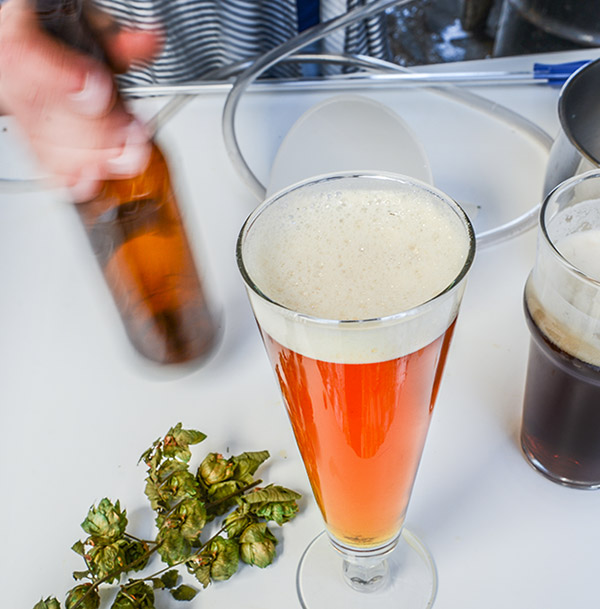
Whether there is a party around the corner or the kegerator is running dry, you have probably been in a situation where you needed to brew a beer in a week or two. Producing “fast brews” comes with its challenges, but the following five tips will help you make a great beer in a short time span.
1. Stick with Ales
Fermenting lagers requires a prolonged secondary fermentation at low temperatures. Typically, lagers are held at lagering temperatures for anywhere from a few weeks to a few months. This fermentation time stabilizes the beer and ensures any harsh flavors have time to mellow out. The lagering step itself can take longer than the entire brewing and fermentation of an ale.
2. Keep Original Gravity Low
While it is completely possible for bigger beers to ferment in just a few days, it still takes time for high gravity beers to come into their own. The lower the gravity, the greater chance of producing a quality beer in a short amount of time—aim for something below 1.050. British and American session ales generally work well for a fast turn around. Certain styles can be brewed at higher gravity while still turning out a tasty brew in a week or two, such as some wheat or rye-based beers.
3. Utilize Bold Flavors
Even after picking an ideal style with a lower gravity, beers being pumped out in under a week or two can still embody the “green” characteristics common in young beer, such as acetylaldehyde and diacetyl. With sufficient time to mature and condition along with the yeast, these green characteristics will subside. When brewing in a short time frame, ingredients with bold flavors and aromas can be used to mask these imperfections. Darker specialty grains that lend chocolate and roasty notes tend to work well, or a healthy dose of hops.
4. Pitch Lots of the Ideal Yeast
The key to a quick and clean fermentation is pitching more than enough yeast to effectively convert sugars to CO2 and alcohol, while still precipitating out to create clear(ish) beer. Look for strains with high attenuation and flocculation that produce minimal phenol and alcohol characteristics. Be careful when using Belgian strains, as powerful esters are not always pleasant in young ales. Also, be sure to pitch plenty of viable yeast cells. In fact, you may even want to use up to double the amount of yeast you typically pitch to ensure there is plenty of healthy cells to make quick work of the sugars.
5. Carbonate in Kegs
Bottlers beware. The “quickest” homebrews out there are being served from the keg. Bottle conditioning requires another week or more for the beer to fully carbonate to serving levels. If kegging, beer can be enjoyed shortly after being racked and force carbonated. If you need to bottle, rewind and start two weeks ago!
6. Use the Brew-Boss Electric Homebrewing System
If you are unfamiliar with the Brew-Boss® home brew system, it is an all electric home brewing system that allows home brewers to brew extract or all-grain recipes with complete and accurate automatic control of temperature and timing. Automated control provides consistent results every time. www.brew-boss.com
As with most things in homebrewing, the best way to find out what works for you is to brew, test and brew again!
No comments:
Post a Comment